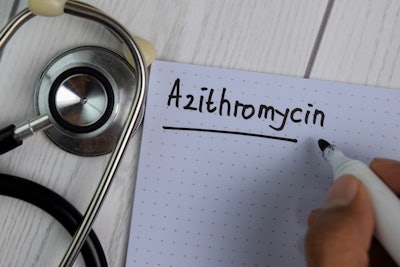
Low-cost, oral drug azithromycin, a commonly prescribed antibiotic, is showing promise as an asthma therapeutic. In a new study from Australian researchers, the drug has achieved remission in up to half of moderate to severe asthma patients treated with long-term azithromycin.
The study, “Azithromycin Induced Asthma Remission in Adults With Persistent Uncontrolled Asthma: A Secondary Analysis of a Randomized, Double-Blind, Placebo-Controlled Trial,” was published in Chest. It was conducted by researchers at the Hunter Medical Research Institute (HMRI), a University of Newcastle partner in New South Wales, Australia.
“This is the first study reporting remission can be achieved using drugs other than biologics,” said Peter Gibson, MD, a respiratory physician, clinical researcher and co-director of the HMRI Viruses, Infections/Immunity, Vaccines and Asthma research program. “Biologics are injection medicines, cost-prohibitive in low- and middle-income countries (approximately $500 to $3,000 per month) and restricted to the most severe cases in high-income countries.”
Using azithromycin to treat severe asthma is not exactly a reach. Many clinical practice guidelines now recommend long-term macrolide antibiotics, like azithromycin, as an add-on therapy to manage the condition.
The study included 335 participants and examined data from the AMAZES clinical trial, which evaluated the safety and efficacy of azithromycin on asthma exacerbations. The primary remission definition (referred to as clinical remission) was zero exacerbations and zero oral corticosteroids during the previous six months and evaluated at 12 months via a five-item asthma control questionnaire. Secondary remission definitions included clinical remission plus lung function criteria. Complete remission was defined by a sputum eosinophil count less than 3% plus the criteria given in primary and secondary remission.
After 12 months of treatment with azithromycin, a subgroup of patients achieved both clinical remission and clinical remission plus lung function criteria. A significantly higher proportion of the azithromycin group achieved complete remission. Additionally, patients with both eosinophilic and noneosinophilic asthma achieved remission.
“Achieving remission has huge health and economic impact as exacerbations are completely abolished, symptoms are fully under control and the need for risky drugs such as corticosteroids is eliminated. Future asthma treatment should aim to achieve asthma remission,” says Dennis Thomas, PhD, MPharm, a study co-author and HMRI clinical scientist.























